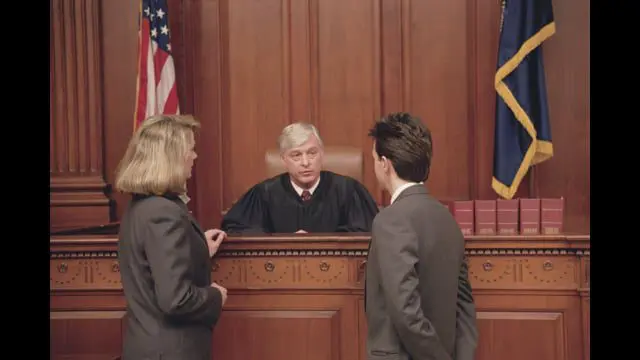Bankruptcy represents a pivotal legal avenue for individuals and businesses grappling with insurmountable debt. This process, while complex, offers a beacon of hope for those seeking relief from financial burdens that have become unmanageable. Embarking on the bankruptcy journey can be daunting, yet understanding the nuances of this legal solution is the first step towards regaining financial stability and starting anew. The essence of bankruptcy lies in its capacity to provide debtors with a fresh start through the liquidation of assets to pay off debts or the creation of a repayment plan, all under the protection of the bankruptcy court.
The Path to Financial Recovery: An Overview of Bankruptcy
Bankruptcy encompasses various chapters, each tailored to specific financial situations, offering a structured approach to tackling debt. Quiebra del Capítulo 7, often referred to as liquidation bankruptcy, allows individuals to discharge most unsecured debts, such as credit card debt and medical bills, through the liquidation of non-exempt assets. Conversely, Quiebra del Capítulo 13 appeals to those with a regular income, enabling them to keep their assets while repaying debts over a three to five-year plan. For businesses struggling to stay afloat, Chapter 11 Bankruptcy provides a mechanism for reorganizing debts and modifying payment terms to creditors, facilitating the business’s operational and financial restructuring.
Navigating the Legal Labyrinth: The Bankruptcy Filing Process
Initiating the bankruptcy process involves meticulous preparation and adherence to legal protocols. The journey begins with credit counseling, followed by the compilation and submission of detailed documentation regarding one’s financial status to the bankruptcy court. This documentation includes lists of assets, liabilities, income, expenditures, and a statement of financial affairs. The importance of accuracy and transparency in this phase cannot be overstated, as it forms the foundation upon which the bankruptcy case is built.
El papel del administrador concursal
A central figure in the bankruptcy process is the trustee, appointed to oversee the case. In Chapter 7 filings, the trustee’s responsibilities include reviewing the debtor’s petition, liquidating non-exempt assets, and distributing the proceeds to creditors. In Chapter 13 and Chapter 11 cases, the trustee evaluates and, if deemed fit, approves the repayment plan, monitoring the debtor’s adherence to the plan’s terms throughout its duration.
Automatic Stay: A Shield Against Creditors
Upon filing for bankruptcy, an automatic stay immediately takes effect, serving as a legal shield that halts most collection actions against the debtor. This provision prevents creditors from pursuing lawsuits, wage garnishments, or contacting the debtor for payment, offering a respite for individuals and businesses as they navigate their bankruptcy case.
The Road to Rebuilding: Life After Bankruptcy
Emerging from bankruptcy marks the beginning of a new chapter in one’s financial life, presenting an opportunity to rebuild credit and make prudent financial decisions. While bankruptcy can remain on a credit report for up to 10 years, impacting one’s ability to obtain credit, diligent efforts towards financial stability can mitigate these effects over time. Adopting sound financial practices, such as budgeting, saving, and using credit wisely, is instrumental in restoring financial health and preventing future fiscal crises.
The Evolution of Bankruptcy Law: Adapting to Economic Shifts
Bankruptcy law is dynamic, evolving in response to economic shifts and societal needs. Recent debates have centered around reforming bankruptcy law to address contemporary challenges, such as the burgeoning student loan debt crisis and the economic repercussions of global pandemics. These discussions underscore the importance of adapting legal frameworks to provide equitable solutions to debtors while balancing the interests of creditors.
Expanding the discussion on bankruptcy requires delving into specific case studies and examining pivotal legal aspects that have shaped bankruptcy law and its application. These real-life examples provide valuable insights into the complexities of bankruptcy proceedings and the profound impact they can have on individuals, businesses, and the economy.
Case Study: The Lehman Brothers Bankruptcy
One of the most significant bankruptcy cases in history is the 2008 filing by Lehman Brothers, one of the world’s largest investment banks. This Chapter 11 bankruptcy was the largest in U.S. history at the time, with Lehman holding over $600 billion in assets. The Lehman Brothers case underscored the potential systemic risks posed by the failure of major financial institutions and highlighted the limitations of existing bankruptcy laws in dealing with the collapse of such entities. The fallout from this bankruptcy accelerated the global financial crisis, leading to widespread economic turmoil and prompting reforms in financial regulation and bankruptcy law, including the Dodd-Frank Wall Street Reform and Consumer Protection Act.
Real-Life Example: Detroit’s Municipal Bankruptcy
In 2013, the City of Detroit filed for Chapter 9 bankruptcy, marking the largest municipal bankruptcy filing in U.S. history. Facing long-term debt estimated at $18-20 billion and a declining population and tax base, Detroit used bankruptcy to restructure its debts and obligations. This case brought to light the challenges cities face in managing pension obligations, bond debts, and other liabilities within the constraints of diminishing resources. Detroit’s bankruptcy proceeding was closely watched for its implications on municipal finance, labor relations, and the treatment of pension and bond obligations in bankruptcy.
Legal Aspect: Student Loan Debt and Bankruptcy
A significant and evolving legal issue within bankruptcy law is the dischargeability of student loan debt. Traditionally, discharging student loans in bankruptcy has been challenging, requiring proof of “undue hardship.” However, recent cases have begun to test the boundaries of this standard, with some courts adopting a more lenient approach to evaluating hardship claims. These developments signal a potential shift in how bankruptcy law addresses student loan debt, reflecting broader concerns about the impact of educational debt on individuals’ financial well-being.
The Automatic Stay and Eviction Protections
The automatic stay provision of bankruptcy law provides immediate relief to debtors by halting collection actions, foreclosures, and evictions. A notable application of this provision occurred during the COVID-19 pandemic when many individuals facing financial hardship and potential eviction turned to bankruptcy for protection. The automatic stay’s role in preventing evictions during economic crises has sparked discussions about the intersection of bankruptcy law, housing policy, and public health.
Conclusión
Through these case studies and legal explorations, the multifaceted nature of bankruptcy becomes apparent. From the systemic implications of major corporate failures and the financial restructuring of municipalities to the personal struggles with student loan debt and the protections against eviction, bankruptcy law plays a critical role in addressing financial distress across different scales and contexts. As legal practices and societal needs evolve, bankruptcy law will continue to adapt, offering vital mechanisms for debt relief and economic recovery.
Bankruptcy embodies a legal recourse designed for those ensnared by debt, offering a pathway to financial relief and renewal. By demystifying the complexities of the bankruptcy process and understanding the legal protections it affords, individuals and businesses can navigate their financial predicaments with informed confidence. As the legal landscape continues to evolve, so too will the strategies for managing debt and achieving fiscal solvency, underscoring the enduring significance of bankruptcy in the realm of financial law.
Divulgación: Generative AI creó el artículo









